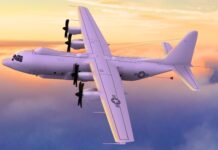On 27 August 2025 the Russian Fighterbomber Telegram channel published a videoclip taken by the pilot of a Russian Su-27SM fighter over the Black Sea that day. The video showed a US Navy P-8A Poseidon maritime patrol aircraft (MPA), with the Bureau number (BuNo) 169554, with its Raytheon AN/APS-154 Advanced Airborne Sensor (AAS) in the extended position: the first time that this has been seen ‘publicly’.
The mission had been tracked by the ItaMilRadar website, which revealed that the aircraft had taken off from Naval Air Station (NAS) Sigonella at around 0900 CEST, crossing Greece and Bulgaria before refuelling over eastern Romania. The aircraft then crossed the Black Sea before patrolling off Sevastopol and the Russian naval base of Novorossiysk. The Poseidon returned to Sigonella at around 1730 CEST.
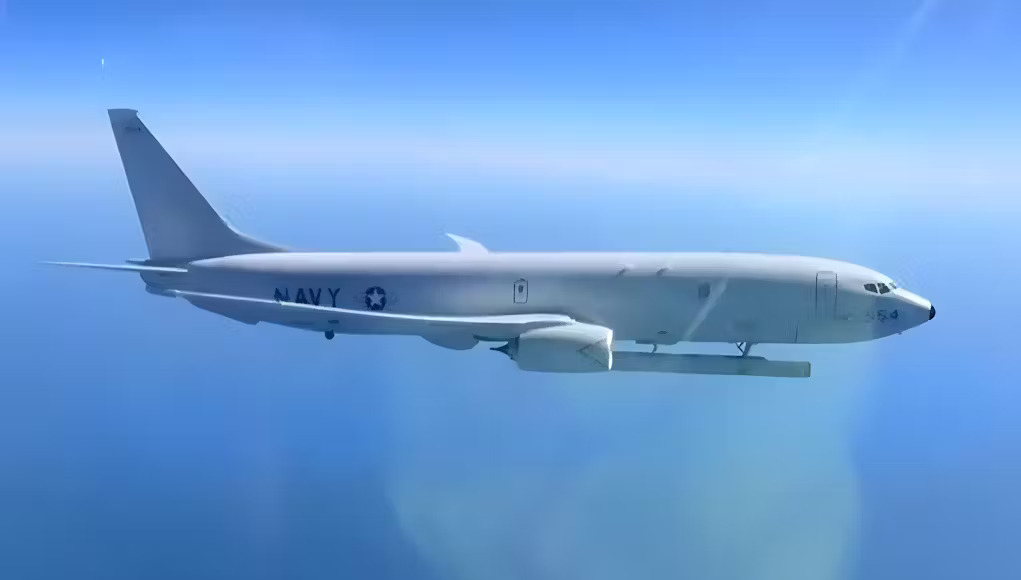
Patrols by AAS-equipped P-8As had stopped in March this year, when the Trump administration decided to cease providing intelligence data to Ukraine. Two AAS-equipped P-8A aircraft (168996 and 169554) flew from NAS Sigonella to Portsmouth in the United States on 8 March 2025. They subsequently moved to new bases to start a new mission of surveilling the US Border.
P-8 reconnaissance flights in the Black Sea region have now resumed at a renewed tempo, however, highlighting a continuing US commitment to Western efforts to monitor Russian naval activities in the Black Sea and to protect the so-called ‘grain corridor’, which remains strategically vital for Ukrainian exports.
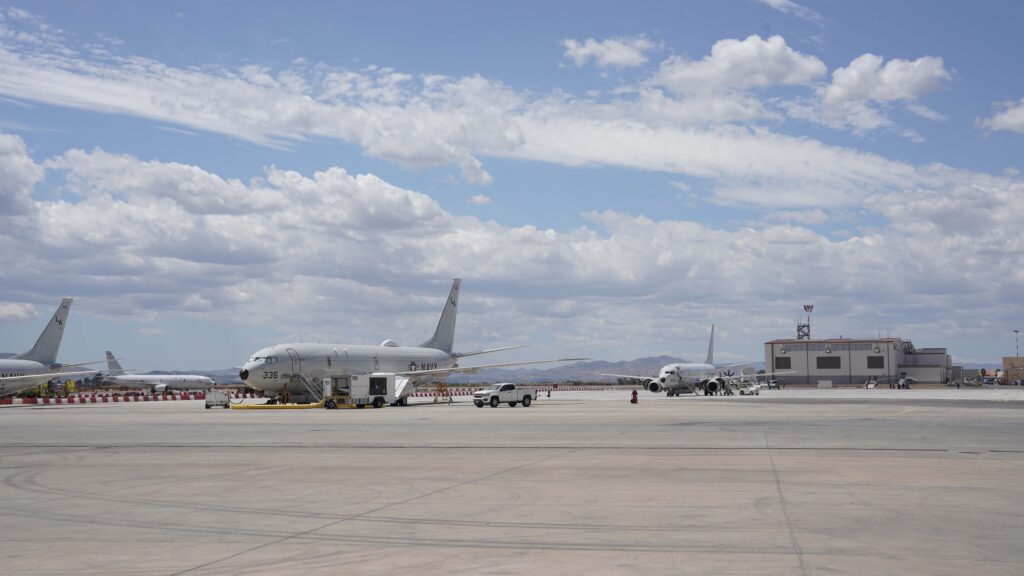
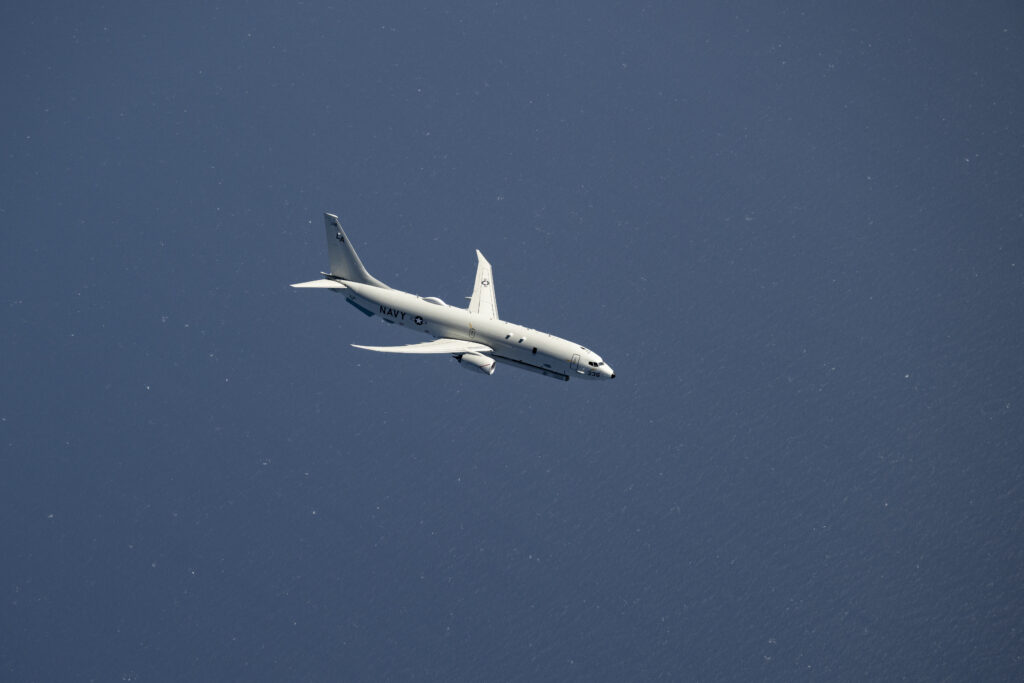
Advanced multi-function radar systems designed to provide high-resolution ground mapping, moving-target detection and tracking, in over-water, over-land and littoral environments, have been deployed on US Navy P-3 MPAs and more recently P-8s for some years.
The AN/APS-149 Littoral Surveillance Radar System (LSRS) used high-resolution synthetic aperture radar (SAR) and inverse synthetic aperture radar (ISAR) modes to provide high-resolution pictures and to identify moving targets.
LSRS (or a precursor) was first noted on a US Naval Research Laboratory NP-3B (152739) in 1978, perhaps in prototype form. Developed in the ‘black world’, it seems to have entered service on the P-3C in about 1997. Some 12 systems were acquired, with 16 P-3C BMUP aircraft modified to carry the LSRS as BMUP+ platforms. These were 161121, 161126, 161132, 161404, 161405, 161408, 161411, 161414, 161415, 161586, 161587, 161588, 161589, 161590, 161593, and 161596. Additionally, 158574, 160293, 161337 were also been seen with LSRS.
These aircraft were assigned to US Navy patrol squadrons VP-1, VP-4, VP-8, VP-10, VP-26, VP-40 and VP-46.
The final three P-3Cs equipped with LSRS often operated without visible Bu Nos or modexes, and even lacked NAVY titles, although it is understood that they are/were 158574, 160293 and 161337 and that they were flown by US Navy crews using navy call-signs. It was rumoured that the aircraft performed drug interdiction missions along the US-Mexican border and in the Gulf of Mexico.
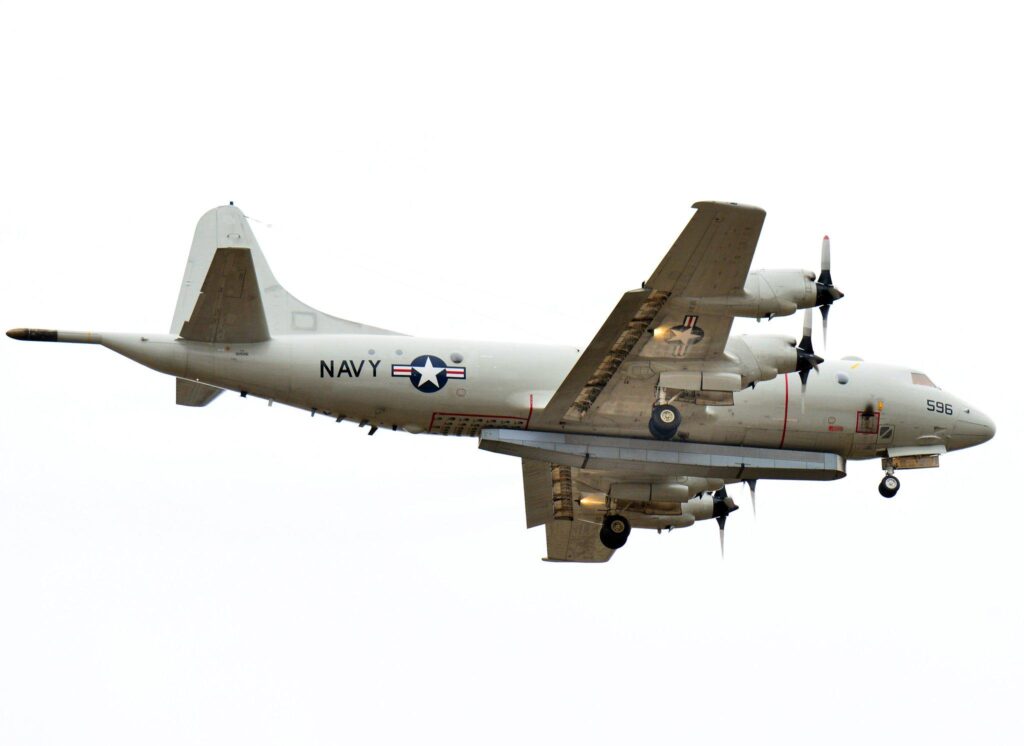
The US Navy awarded a multi-year contract for the development of the AN/APS-154 Advanced Airborne Sensor (AAS) for the P-8A to the Raytheon Company in July 2009. Development was accelerated by making reuse of LSRS hardware.
The new sensor, featuring a dual-sided active electronically scanned array (AESA), was designed to replace the capabilities of the LSRS, but with increased emphasis on non-traditional anti-submarine warfare (ASW) sensing. A modern submarine displaces a lot of water as it moves, generating a wake – especially when moving fast and relatively close to the surface. That wake is invisible to the human eye on the surface, merging with the normal pattern of the waves, but advanced sensors with very high resolution and advanced data processing can pick out the faint wake from wave patterns, effectively detecting a signal from the mass of background noise.
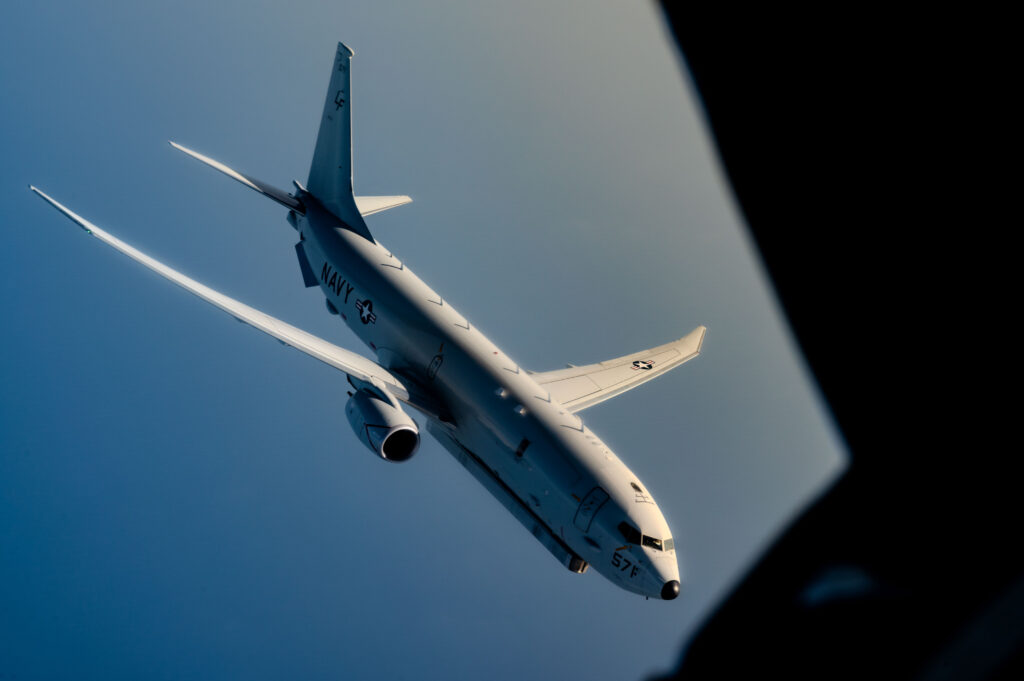
The operator is again BUPERS SDC Dallas, which has detachments at NAS Patuxent River and NAS Point Mugu, California, and has been described as a critical category 1A Chief of Naval Operations (CAT 1A CNO) special project unit. The unit is also known as NAWC-23.
The P-8A Poseidon has significant modifications to carry AAS, including ‘pylons’ to attach the pod (the extendable Special Mission Pod Deployment Mechanism (SMPDM) cradle). This lowers the radar pod, preventing obstruction of the radar’s field of view by the P-8A’s underwing engines. There is also an aerodynamic modification below the fuselage, above the front end of the AAS, and two large strakes below the rear fuselage.
At least 16 P-8As have been modified to carry AAS. Whereas the LSRS P-3Cs were extremely anonymous, the AAS-equipped P-8As have been seen with tailcodes, Modexes and NAVY titles.
By August 2019 AAS-equipped P-8As 167951 and 167954 had been noted with VX-20, while 167952/952, 169007/007, 169010/010 and 169335/335 were serving with BUPERS SDC Dallas. 168996 was seen at Love Field in March 2018 and at Kadena as LA996 in July 2019, ostensibly operating with VP-5 ‘Mad Foxes’.
Since then 169325/325, 169336/LA336, 169341/341, 169554/LK554, 169567/567, 169568/568, 169571/LF571, 170014/014 and 170015/015 have all been spotted carrying AAS.
Multi-Mission Pod
The AN/APS-154 AAS pod should not be confused with the newer Multi-Mission Pod (MMP) developed by Boeing using internal funds from 2016. The MMP is designed to carry sensors that are not organic to the Poseidon and attaches to the existing attachment points developed for AAS, using the same power and cooling. The 20 ft (6 m)-long MMP is shorter than the AAS pod and is designed to accept a range of modular payloads, potentially offering larger apertures for a variety of multi-sensor, multi-spectral, multi-intelligence capabilities. This could include equipment used by export customer nations.
The MMP was first marketed at the 2021 Dubai Airshow and the US Navy awarded a contract for integration of the pod on the P-8A in September 2023.
The MMP began testing on the P-8A at NAS Patuxent River in July 2024, with certification expected by the end of that summer. The aircraft used was a former AAS testbed: 167951/951 of VX-20.



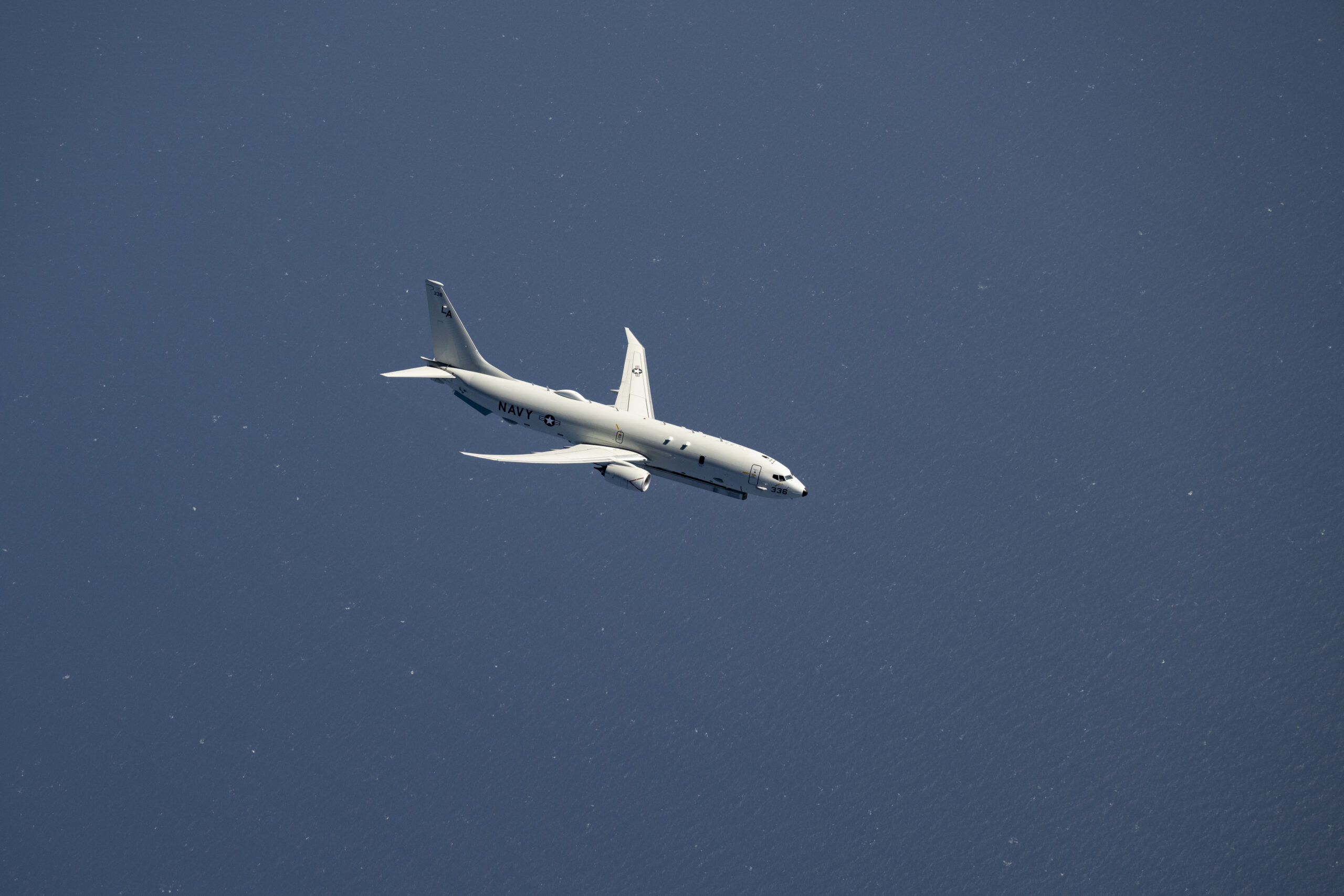



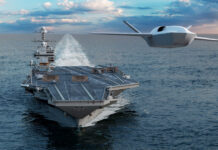
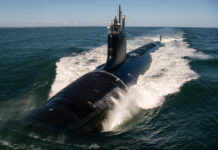
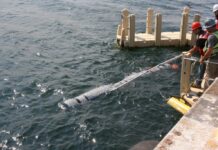
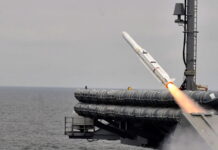
![Hybrid navies: Integrating uncrewed capability into carrier strike The US Navy (USN) carrier USS John C Stennis (left), the French Navy carrier FS Charles de Gaulle, and elements of their strike groups are pictured sailing together in US Fifth Fleet’s area of operations. The US, French, and UK navies are all developing ‘hybrid’ crewed/uncrewed mixes for their carrier airwing capability. [US Navy]](https://euro-sd.com/wp-content/uploads/2025/09/2-HST-CdG-USN-Kopie-218x150.jpg)

